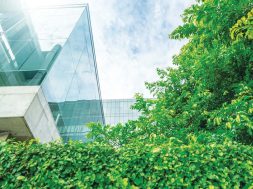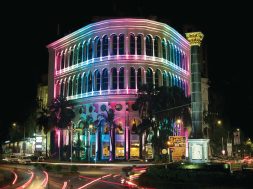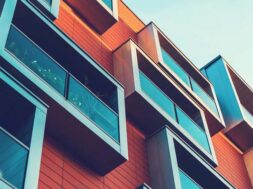“Green homes is not a cost, it’s an investment that only gets more valuable over time and that holds true no matter the income bracket of the homeowner”
With climate change, energy, water efficiency and waste management becoming areas of national concern, sustainability and green can no longer be ignored by anyone or any city or community really. Today, in most parts of the world, sustainable developments are slowly replacing traditional construction and building practices in an effort to minimise negative impacts on the environment as much as possible. In India too, green developments are slowly becoming visible in most cities even though a lot of progress is yet to be made. The early adopters in the commercial sector and corporate world have slowly started working their way to creating sustainable and energy efficient spaces in many parts of the country especially in large metros including Delhi, Mumbai, Pune, Bengaluru and Chennai. While this is a welcome move, unless the residential sector also embraces sustainability and green concepts, as a nation very little progress can be made.
In India, today the housing sector is growing at an exponential pace and is also contributing significantly to the Indian economy. While best construction practices are being increasingly employed by many stakeholders in the residential sector, sustainability concepts are only beginning to catch their attention.
What’s the deal with green homes?Green homes can have tremendous benefits, both tangible and intangible. The immediate and most tangible benefit is in the reduction in water and operating energy costs right from day one and during the entire life cycle of the building. The energy savings could range from 20 – 30 per cent and water savings around 30 – 50 per cent. Green homes ratings can also enhance marketability for the project. Intangible benefits of green homes include enhanced air quality, excellent day lighting, health and well-being of the occupants, safety benefits and conservation of scarce resources for the nation.
Green homes link sustainable materials and practices with better human and environmental health. We are looking at several key components being addressed such as energy efficiency, improved water and resource efficiency and better indoor air quality. If these are not addressed effectively, you do not have a green home.
With the dramatic increase in the use of various chemicals inside our homes, in many of our new urban dwellings the indoor air is more polluted than the outside air. This can be attributed to the presence of asthma-inducing agents such as mould and toxic chemicals in paints, varnishes and other synthetic materials. Internationally indoor air is recognised as one of the top five human health risks by various governmental agencies. Green buildings require the use of nontoxic materials and limit indoor exposure to carcinogens such as formaldehyde in manufactured wood products including plywood and particleboard and volatile organic compounds (VOC’s) in finishes.
Home energy uses also contribute to global warming the effect of which has been devastating for our country as witnessed in the recent floods and cyclone at Uttarkhand and Orissa. The 17th electric power survey of India claims that domestic household accounted for 28 per cent of all electricity in the country. The construction industry as a whole would probably account for a significant portion of the rising Green house gases (GHG) emissions of India. By optimising our buildings, green designs save on oil and gas bills, which are going through the roof and costing the economy precious foreign exchange. But even as green homes gain in popularity, they are still troubled by a sticky association with the rich and perceived by many as expensive for ordinary buyers.
Are green homes really expensive?Cost is always a relative issue and what is one man’s necessity can be another’s luxury. However, green homes today in most cases don’t necessarily cost much more than conventional buildings and homes.
Go for low-hanging fruits firstNot all aspects of green involve additional cost especially the design related ones and those are the first green aspects that all buildings must target. For example, green homes promote harvesting of natural lighting for each apartment and this can be achieved quite easily if planned well in advance. It is a question of an integrated design approach wherein the architect, client and the green experts work closely to simulate and ascertain the extent of natural light penetration within apartments and how it can benefit home owners. Similarly when possible, proper orientation and siting a building with proper shading devices is a simple cost effective thing a builder can do. This optimises solar exposure as the sun travels across the sky. It is surprising that many buildings are orientated without giving a thought to the sun.
Similarly designing a home with right location of windows and openings for cross ventilation can help homes harvest more fresh air and provide a nicer environment for all the occupants. There is really no additional cost except that the project team applies their mind and knowledge and comes out with the best designs that can ensure these buildings are better ventilated and also have overall lesser heat ingress compared to conventional buildings. Many of these aspects of designs are not new in Indian context. But then again very few projects really pay attention and apply these basic scientific principles. There is no added cost and the benefit that can be derived is huge and one needs to live in these homes to experience the true benefit.
The next level of low-hanging fruit is choosing the right building wall material with optimal thermal mass, shading and window-wall ratio. Passive solar design supplemented with optimal thermal mass inside the house stabilise interior temperatures and take the extreme fluctuations out of cooling and heating loads.
Thinking about costDepending on what is considered in the baseline specifications of a home, the average “green premium” for sustainable design totals no more than Rs. 50 to Rs. 120 per square foot, generally to cover improved envelope, efficient windows, high-efficiency appliances, and in some cases water treatment systems. But the premium dwindles as builders gain experience and embed sustainability features as ‘standard’ into their design and construction practices.
While there is this additional cost burden for builders, is this really appreciated by home buyers? The answer to this in an Indian context is yes and no. While home buyers today are conversant with green homes and ideally love to live in green homes, very few of them are willing to pay for the additional so-called premium for green homes. Today, an average Indian consumer wants the builder to provide all the “green” specifications within the same budget as a regular home and this is where there is a “communication” disconnect. While most developers today are slowly beginning to embrace green requirements with the fact that buyers are still not ready to pay for it makes these developers want to do only bare minimum things that don’t pinch their budget. So really it is today a chicken or egg story.
This scenario is likely to change going forward especially when home buyers start thinking of green homes not as a cost but as an investment. Home buyers needs to consider with green design positive monthly cash flow. For example if the savings from energy conservation are greater than the increase in the monthly cost of the mortgage or construction loan, then the homeowner can literally make money month after month and this is what they need to understand. Green homes is not a cost, it’s an investment that only gets more valuable over time and that holds true no matter the income bracket of the homeowner. Although payback over time is a certainty, the length of time it will take depends on various aspects including future energy and maintenance costs. Today, most green projects look at investments which have a payback of 3-4 years maximum and any green measure with longer payback than this usually doesn’t get implemented.
Passive solar technologies, better envelope materials, high-efficiency fixtures and appliances, and sustainable building materials yield the most bang for the buck by far. Compact fluorescent lamps (CFLs), for example, cost 3–4 times more than incandescent bulbs, but they use a fraction of the energy and can last ten times longer. After that, systems become far more expensive with diminishing returns. Solar power is a case in point: Solar hot water units, which cost from around Rs. 100 to 150 per litre depending on size requirements have a typical payback of five years or less, making them somewhat affordable. But solar photovoltaic (PV) panels, which supply a home’s electricity, can run from around Rs. 2 lakhs per kilowatt or more installed and is yet to reach simple economic viability and has storage related costs and issues. Most projects today are definitely looking at solar hot water systems for sure. Some large residential developments especially villas are also looking at providing 3-5 KW panel per villa to take care of the lighting and other common loads even though the paybacks are still in the range of 6-8 years in many cases without considering any incentives or rebates.
Even as green housing embraces affordability, others are trying to bring green principles to affordable housing for low-income populations, including the elderly. For example TATA Housing one of the largest residential developers in the country are coming up with several affordable housing developments across India and are still pursuing a green rating for all of them. Similarly large developers such as Oberoi Realty Group, Equinox Realty among others are going green for several of their high-end as well as mid-market residential developments. The kind of specifications and green materials being used in these projects depend on the level of green rating as well as the marketability of these projects but nevertheless one thing that is common is all these projects is that they are striving to reduce energy and water use by a host of various green envelope materials and systems.
Most green residential developments are pursuing various water efficiency measures including installation of sewage treatment plants to treat and reusing treated water for landscaping and toilet flushing purposes, rainwater harvesting, use of native and drought tolerant landscaping species to reduce irrigation water consumption, low-flow but high-efficiency toilet fixtures, better irrigation practices such as drip irrigation etc. In the materials front, various green materials are being used today including materials with high recycled content, materials that are rapidly renewable such as bamboo, low VOC materials for better indoor air quality etc. Waste management is also another focus area with many developments opting for organic waste management systems or composting systems, on-site recycling practices in an effort to promote green and sustainability among the occupants as well
Looking to the futureMoving forward, green homes stand to become far more innovative than they are now. Today, the race is on to make houses that generate all their power from renewable sources affordable to ordinary consumers. Internationally many homes are striving to produce as much energy as they consume, a feature known as “net-zero energy homes”.
These are ambitious goals for a country of builders trying to adapt to the green mindset. Some are resistant to change—particularly if they’ve been building a certain way for a long time—and resent the intrusion. Others have already been building green for years, but just haven’t called it that. Still others are starting their careers as certified green builders.
Greening residential spaces can surely help reduce the overall negative impact on the environment and reverse the practice of unsustainable construction activities while reducing operating costs, enhancing building marketability, increasing occupant satisfaction and all the while creating spaces that are healthier spaces to live and work. For us in India, it is crucial that these important aspects of sustainability are addressed by the construction industry as we build the nation’s infrastructure for the next century over the next couple of decades. All we need is more people to transform the market place and educate the public.
Cookie Consent
We use cookies to personalize your experience. By continuing to visit this website you agree to our Terms & Conditions, Privacy Policy and Cookie Policy.









